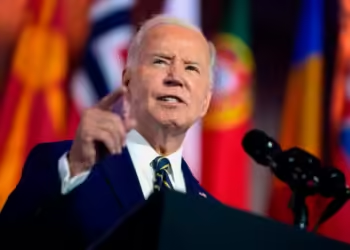In 47 of 50 states, non-Whites are underrepresented in state legislatures
The Washington Post
By Philip Bump
I happened to stumble across an interesting data set the other day, one that very much speaks to a central discussion in U.S. politics at the moment. The National Conference of State Legislatures (NCSL) — an organization that is refreshing in how directly explanatory its name is — has assessed the demographic composition of the bodies of each of the 50 states. It breaks out legislators by gender, education and religion, among other things, giving a broad sense of how closely a state’s elected leaders reflect its population.
Take race, for example. The NCSL data break out the racial composition of each legislature for 2015 and 2020, allowing us to both understand how racial diversity in representation might have changed and also the extent to which legislators look like the states they serve. We know, for example, what percentage of each state is White. Now we can see how that compares with the state’s leaders.
Or, put visually, we can do this.

There’s an important distinction to draw here. When we talk about “Whites,” we generally mean Whites who are not Hispanic. The federal government collects data on race and ethnicity, with “White” and “Black” falling into the former category and “Hispanic” into the latter. The NCSL data use indexes of Hispanic and Black legislators to identify race and ethnicity, but the data for state populations (which comes from the Census Bureau) displays non-Hispanic Whites. These lines are somewhat blurry, but given that both legislator demographics and census records are based on self-identification, it seems safe to draw comparisons.
What’s shown above is the change in the number of White legislators from 2015 (left end of the arrow) to 2020 (right end). That’s compared with the percentage of the population that’s White. An arrow that’s entirely above the grayed area in each box represents a state that has more Whites in its legislature than its population.
That’s every state but three: Nebraska, New Hampshire and West Virginia. They’re indicated with magenta. (D.C. is not included in the NCSL’s data.)
We can look at the same figures another way. Here is the percentage of Whites in the legislature in 2020 (a figure that doesn’t include those elected in 2020, we’ll note) shown from top to bottom. From left to right, the density of Whites in the overall population. Nearly every state sits above that diagonal line, meaning that the population has a greater population of non-Whites than does elected leadership.

One reason for this is that not all residents of a state are citizens, often a requirement for holding office. States with high percentages of noncitizen immigrants — the majority of whom have been Asian or Hispanic in recent years — may have a pool of eligible legislators that doesn’t itself look like the electorate. Another reason is that older Americans are more typically White than younger Americans, meaning that age limits on holding office often similarly skew the demography of a state’s elected officials.
Of course, there are also structural issues. White Americans tend to be wealthier, older and homeowners, all of which are correlated with higher voter turnout rates. While it’s not the case that White people don’t vote for non-White candidates and vice versa, this is likely a contributing factor.
On the second graph above, you can evaluate how close different states are to having legislatures that reflect their populations. Hawaii, for example, sits right on the line; its legislature is only slightly Whiter than its population. Alaska and Oklahoma, though, are much more distant. Should the goal be that elected officials look like those they represent — a goal that isn’t universally shared, mind you — it’s those states that have the largest gaps to close.
You’ll also notice, though, that blue states and red states are similarly distant from the line. On average, the percentage of Whites in the legislatures of states that voted for Joe Biden in 2020 is about 13.4 points higher than the density of Whites in the population. In states that voted for Trump, the difference is 13.1 points. Of course, that latter group of states is much more uniformly White than the blue ones: 70 percent to 62 percent, on average.
What’s nice about these data is precisely that they’re unusual, that we don’t often get to consider these issues at a state level. Whether they reveal a problem or a mundane reality is something else to consider entirely.
Philip Bump is a correspondent for The Washington Post based in New York. Before joining The Post in 2014, he led politics coverage for the Atlantic Wire.









